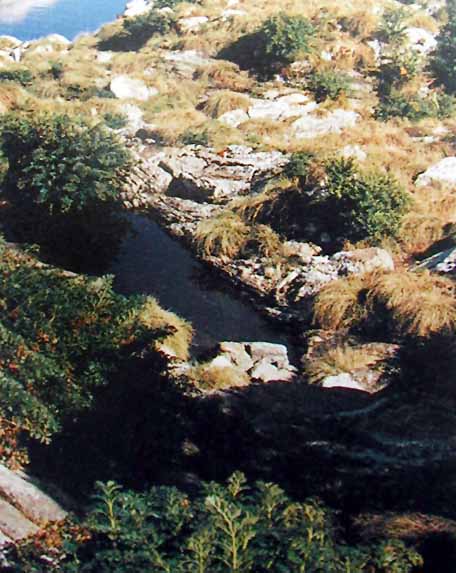Forgotten Fauna
back to the index
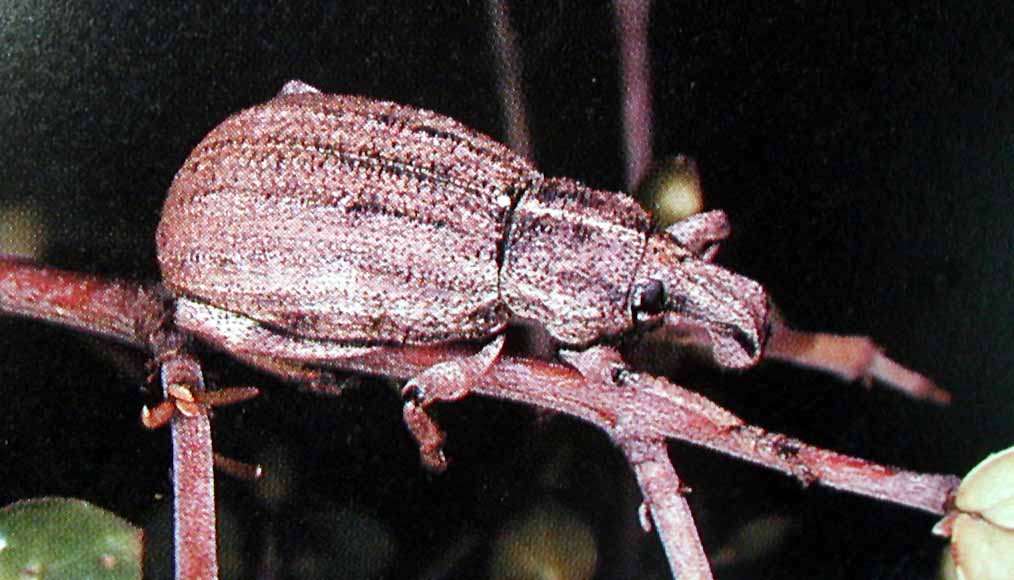
Flax weevil
Anagotus fairburni
Of all the large flightless weevils in New Zealand the flax weevil is probably the best known, even though it was not discovered until 1931, at the northern end of D'Urville Island. Once widespreadthroughput New Zealand, it is now mainly confined to rat-free islands, from the Poor Knights, Hen and Chickens group in the north to Fiordland in the south.
Stephens Island Weevil
Anagotus stephenensis
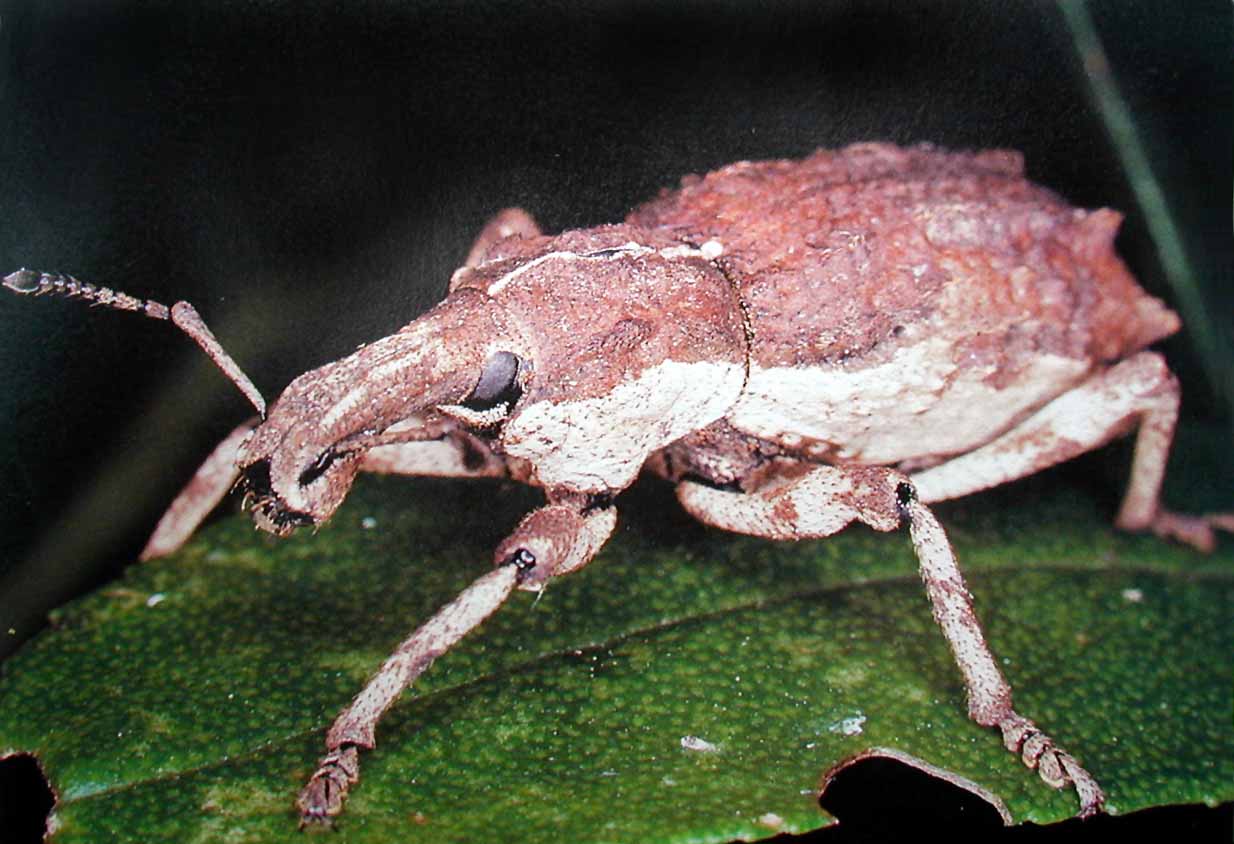
Turbott's weevil
Anagotus turbotti

New Zealand's largest and most striking weevils belong to the genus
Anagotus, a group of both large and small flightless weevils with
differing habits and habitat requirements.
Stephens Island and Turbott's weevils, two of the largest and most
colourful, are the only lowland survivors of a once diverse and widespread
group. Fragments of giant weevil species similar in size and form to these
have been discovered in cave deposits at Waitomo, dating back some 1700years,
and others have been found in the Pureora Burried Forest deposits formed
during the Taupo eruption of about A.D.130. None of the giant-sized Anagotus
found in pre-human subfossil cave an froest deposits have been found in
more recent upper deposits. They are likely to have become extinct though
eaten by kiore, the polynesian rat, that arrived with humans some 800-900
years ago.
Turbott's weevil is found only on the rat-free islands of the Three
Kings and Poor Knights, and on Muriwhenua of the Hen and Chickens islands;
the Stephens Island weevil has been found only on Stephens island. These
weevils, whose larvae are wood borers, are found in the live wood of severals
different trees, but they are especially found on ngaio and karaka. The
adults can be found day and night on the branches of trees and have been
observed eating the somewhat oily leaves of ngaio.
Several other species of Anagotus are generally distributed
in New Zealand, and are not considered to be endangered nor prone to rat
predation. These are usually smaller species living iin snow grasses and
niggerhead sedges, or in Coprosma or Phyllocladus, with one,
quite abundant, in fallen logs.
Speargrass Weevil
Lyperobius huttoni
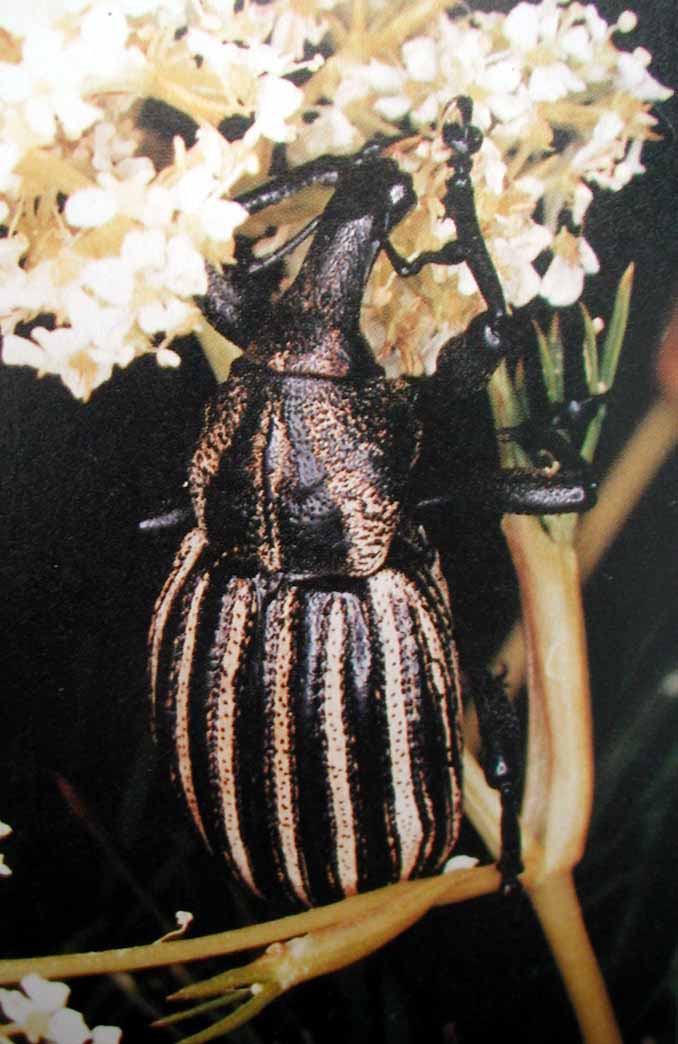
The speargrass weevils are the most widely distributed of the large flightless weevils and unlike most other species they are chiefly found on the mainland, rather than on rat-free offshore islands. However, apart from a small population on the Wellington coastline, they are restricted to the South Island in "islands of the upper atmosphere" -- remnant tussock grassland about 1200-1600metres high on mountain ranges carved out by early glaciations.

Tusock weevils (Anagotus lewisi group) are widely distributed in the South Island. Their larvae fee in tussock tiller bases, whereas the adults are found on a range of plants and are particularly fond of snowberry (Gaultheria)
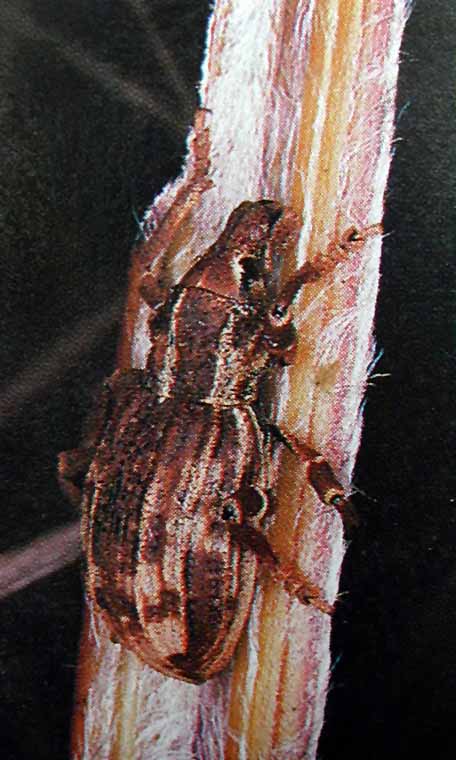
Astelia weevils (anagotus oconnori) are distributed in the mountains
of both islands. Intermittently found since G.V.Hudson's time, 110years
ago, they have only recently been found to be abundant on Astelia nivicola
in Northwest Nelson.

